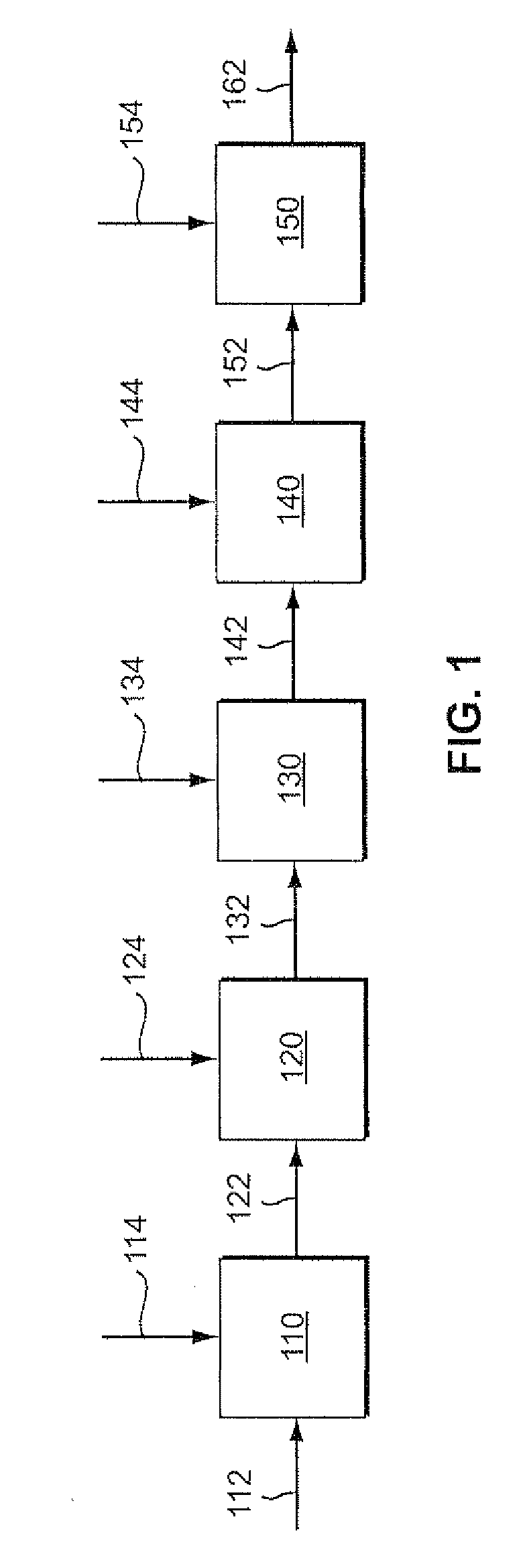Processes and systems for the bleaching of lignocellulosic pulps following cooking with soda and anthraquinone
a technology of bleaching and soda, which is applied in the field of bleaching of lignocellulosic (e. g., wood) pulps, can solve the problems of inability to incrementally increase the yield of the kraft process, the loss of aq additive to the pulping process, and the inability to recover aq additive,
- Summary
- Abstract
- Description
- Claims
- Application Information
AI Technical Summary
Benefits of technology
Problems solved by technology
Method used
Image
Examples
examples
[0025]Laboratory bleaching of pulps produced using a soda AQ cooking process in accordance with an embodiment of the present invention and a comparative example involving the kraft cooking process method was conducted using the following two bleaching sequences: O-A-Do-Eop-D and O-A-ZDo-Eop-D. Do represents an initial chlorine dioxide stage. O represents a stage involving oxygen delignification.
[0026]Table 1 presents the bleaching conditions and brightness received after each bleaching step. These laboratory results show that the brightness achieved after the “D” stage for soda AQ pulps may be at least at the level of that of the kraft pulp when using a similar chemical charge. As is well-known in the art, the Kappa number is an indication of the lignin content or bleachability of pulp.
TABLE 1Bleaching Conditions and Brightness Received After Each Bleaching StepC-Soda-AQ pulpKraft pulp15.6 Kappa15.6 Kappa16.9 Kappa16.9 KappaO-A-Do-Eop-DO-A-ZDo-Eop-DO-A-ZDo-Eop-DO-ADo-Eop-D-POTempera...
PUM
| Property | Measurement | Unit |
|---|---|---|
| temperature | aaaaa | aaaaa |
| temperature | aaaaa | aaaaa |
| temperature | aaaaa | aaaaa |
Abstract
Description
Claims
Application Information
 Login to View More
Login to View More - R&D
- Intellectual Property
- Life Sciences
- Materials
- Tech Scout
- Unparalleled Data Quality
- Higher Quality Content
- 60% Fewer Hallucinations
Browse by: Latest US Patents, China's latest patents, Technical Efficacy Thesaurus, Application Domain, Technology Topic, Popular Technical Reports.
© 2025 PatSnap. All rights reserved.Legal|Privacy policy|Modern Slavery Act Transparency Statement|Sitemap|About US| Contact US: help@patsnap.com


